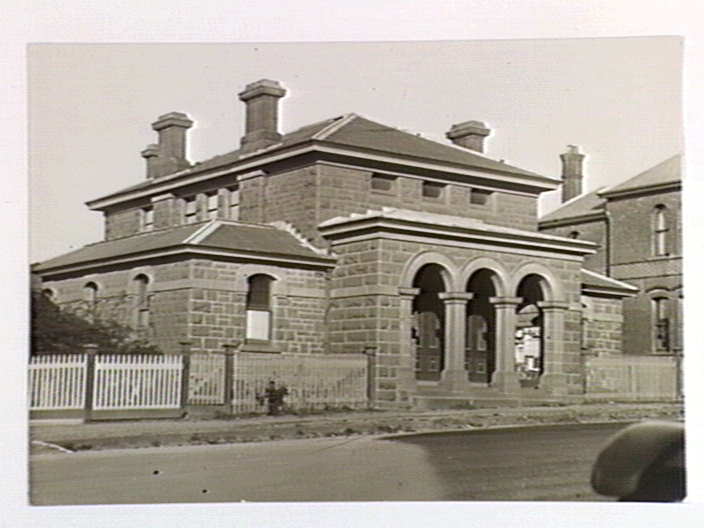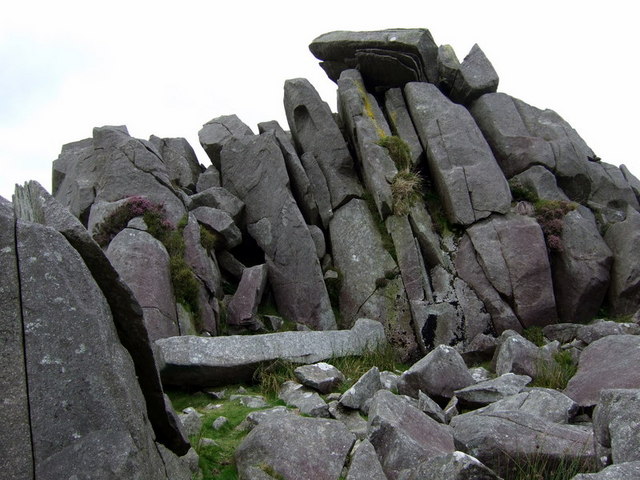|
Old Kilmore Gaol
The Old Kilmore Gaol is a bluestone building in Kilmore, Victoria. It was originally built as a gaol and is located at 8 to 12 Sutherland Street. History Old Kilmore Gaol was built in 1857 under the supervision of Charles Pasley General Sir Charles William Pasley (8 September 1780 – 19 April 1861) was a British soldier and military engineer who wrote the defining text on the role of the post-American Revolution British Empire: ''An Essay on the Military Policy and Ins .... It was a gaol from 1859 until 1891 when it was decommissioned and used as a butter factory. In the 1960s it became a private home and was a restaurant in the 1990s before reverting again to a private home in 2004. Today, the gaol is used for commercial purposes. Its bluestone walls and exterior appearance are the only original features that have been retained. Heritage significance It appears on the Heritage Council of Victoria's Victorian Heritage Database, for being "one of a small group of early Victo ... [...More Info...] [...Related Items...] OR: [Wikipedia] [Google] [Baidu] |
Kilmore, Victoria
Kilmore () is a town in the Australian state of Victoria. Located north of Melbourne, it is the oldest inland town in Victoria by the combination of age and physical occupation, and because it had unique agricultural attributes to drive that earliest settlement. It grew very rapidly to become four times bigger than its nearest inland rival by 1851. Its spectacular growth continued to match that of the major gold mining towns of Ballarat, Bendigo and Beechworth until at least 1861. History The traditional owners of Kilmore and the Kilmore Plains are the Taungurung people, a part of the Kulin nation that inhabited a large portion of central Victoria including Port Phillip Bay and its surrounds. The Tommy McRae artwork held by the National Gallery of Australia depicts the "Kilmore Tribe Holding Corobboree", and a child pioneer of Kilmore, James Hamilton, describes in detail just such a corroboree at Kilmore in 1845. The area was known to the Taungurung as ''Mumillinuck''. Kilmo ... [...More Info...] [...Related Items...] OR: [Wikipedia] [Google] [Baidu] |
Bluestone
Bluestone is a cultural or commercial name for a number of dimension or building stone varieties, including: * basalt in Victoria, Australia, and in New Zealand * dolerites in Tasmania, Australia; and in Britain (including Stonehenge) * feldspathic sandstone in the US and Canada * limestone in the Shenandoah Valley in the US, from the Hainaut quarries in Soignies, Belgium, and from quarries in County Carlow, County Galway and County Kilkenny in Ireland * slate in South Australia Stonehenge The term "bluestone" in Britain is used in a loose sense to cover all of the "foreign," not intrinsic, stones and rock debris at Stonehenge. It is a "convenience" label rather than a geological term, since at least 46 different rock types are represented. One of the most common rocks in the assemblage is known as Preseli Spotted Dolerite—a chemically altered igneous rock containing spots or clusters of secondary minerals replacing plagioclase feldspar. It is a medium grained d ... [...More Info...] [...Related Items...] OR: [Wikipedia] [Google] [Baidu] |
Prison
A prison, also known as a jail, gaol (dated, standard English, Australian, and historically in Canada), penitentiary (American English and Canadian English), detention center (or detention centre outside the US), correction center, correctional facility, lock-up, hoosegow or remand center, is a facility in which inmates (or prisoners) are confined against their will and usually denied a variety of freedoms under the authority of the state as punishment for various crimes. Prisons are most commonly used within a criminal justice system: people charged with crimes may be imprisoned until their trial; those pleading or being found guilty of crimes at trial may be sentenced to a specified period of imprisonment. In simplest terms, a prison can also be described as a building in which people are legally held as a punishment for a crime they have committed. Prisons can also be used as a tool of political repression by authoritarian regimes. Their perceived opponents m ... [...More Info...] [...Related Items...] OR: [Wikipedia] [Google] [Baidu] |
Charles Pasley (engineer)
Major-General Charles Pasley, CB, RE, (14 November 1824 – 11 November 1890) was a British Army officer and Colonial Engineer, Commissioner of Public Works and politician in colonial Victoria. Early life Pasley was the son of Lieutenant-General Sir Charles Pasley, KCB, and his second wife Martha Matilda ''née'' Roberts. He was born at Brompton barracks Chatham, Kent, England, and was educated at the King's School, Rochester, and the Royal Military Academy, Woolwich from 1840. He obtained a commission as second lieutenant in the Corps of Royal Engineers on 20 December 1843. He went through the usual course of professional instruction at the military school at Chatham, of which his father was the head, and proved himself so good a surveyor and mathematician that for some months he temporarily held the appointment of instructor in surveying and astronomy. After serving at several home stations he was promoted first lieutenant on 1 April 1846, and in June was sent to Canada. He ... [...More Info...] [...Related Items...] OR: [Wikipedia] [Google] [Baidu] |
Butter
Butter is a dairy product made from the fat and protein components of churned cream. It is a semi-solid emulsion at room temperature, consisting of approximately 80% butterfat. It is used at room temperature as a spread, melted as a condiment, and used as a fat in baking, sauce-making, pan frying, and other cooking procedures. Most frequently made from cow's milk, butter can also be manufactured from the milk of other mammals, including sheep, goats, buffalo, and yaks. It is made by churning milk or cream to separate the fat globules from the buttermilk. Salt has been added to butter since antiquity to help to preserve it, particularly when being transported; salt may still play a preservation role but is less important today as the entire supply chain is usually refrigerated. In modern times salt may be added for its taste. Food colorings are sometimes added to butter. Rendering butter, removing the water and milk solids, produces clarified butter or '' ghee'', wh ... [...More Info...] [...Related Items...] OR: [Wikipedia] [Google] [Baidu] |
Register Of The National Estate
The Register of the National Estate was a heritage register that listed natural and cultural heritage places in Australia that was closed in 2007. Phasing out began in 2003, when the Australian National Heritage List and the Commonwealth Heritage List were created and by 2007 the Register had been replaced by these and various state and territory heritage registers. Places listed on the Register remain in a non-statutory archive and are still able to be viewed via the National Heritage Database. History The register was initially compiled between 1976 and 2003 by the Australian Heritage Commission, after which the register was maintained by the Australian Heritage Council. 13,000 places were listed. The expression "national estate" was first used by the British architect Clough Williams-Ellis, and reached Australia in the 1970s.Heritage of Australia, pp. 9–13 It was incorporated into the ''Australian Heritage Commission Act 1975'' and was used to describe a collection ... [...More Info...] [...Related Items...] OR: [Wikipedia] [Google] [Baidu] |
1859 Establishments In Australia
Events January–March * January 21 – José Mariano Salas (1797–1867) becomes Conservative interim President of Mexico. * January 24 ( O. S.) – Wallachia and Moldavia are united under Alexandru Ioan Cuza (Romania since 1866, final unification takes place on December 1, 1918; Transylvania and other regions are still missing at that time). * January 28 – The city of Olympia is incorporated in the Washington Territory of the United States of America. * February 2 – Miguel Miramón (1832–1867) becomes Conservative interim President of Mexico. * February 4 – German scholar Constantin von Tischendorf rediscovers the ''Codex Sinaiticus'', a 4th-century uncial manuscript of the Greek Bible, in Saint Catherine's Monastery on the foot of Mount Sinai, in the Khedivate of Egypt. * February 14 – Oregon is admitted as the 33rd U.S. state. * February 12 – The Mekteb-i Mülkiye School is founded in the Ottoman Empire. * February 17 – French naval forces under Cha ... [...More Info...] [...Related Items...] OR: [Wikipedia] [Google] [Baidu] |
1891 Disestablishments
Events January–March * January 1 ** Paying of old age pensions begins in Germany. ** A strike of 500 Hungarian steel workers occurs; 3,000 men are out of work as a consequence. **Germany takes formal possession of its new African territories. * January 2 – A. L. Drummond of New York is appointed Chief of the Treasury Secret Service. * January 4 – The Earl of Zetland issues a declaration regarding the famine in the western counties of Ireland. * January 5 **The Australian shearers' strike, that leads indirectly to the foundation of the Australian Labor Party, begins. **A fight between the United States and Indians breaks out near Pine Ridge agency. ** Henry B. Brown, of Michigan, is sworn in as an Associate Justice of the Supreme Court. **A fight between railway strikers and police breaks out at Motherwell, Scotland. * January 6 – Encounters continue, between strikers and the authorities at Glasgow. * January 7 ** General Miles' f ... [...More Info...] [...Related Items...] OR: [Wikipedia] [Google] [Baidu] |
Maximum Security Prisons In Australia
In mathematical analysis, the maxima and minima (the respective plurals of maximum and minimum) of a function, known collectively as extrema (the plural of extremum), are the largest and smallest value of the function, either within a given range (the ''local'' or ''relative'' extrema), or on the entire domain (the ''global'' or ''absolute'' extrema). Pierre de Fermat was one of the first mathematicians to propose a general technique, adequality, for finding the maxima and minima of functions. As defined in set theory, the maximum and minimum of a set are the greatest and least elements in the set, respectively. Unbounded infinite sets, such as the set of real numbers, have no minimum or maximum. Definition A real-valued function ''f'' defined on a domain ''X'' has a global (or absolute) maximum point at ''x''∗, if for all ''x'' in ''X''. Similarly, the function has a global (or absolute) minimum point at ''x''∗, if for all ''x'' in ''X''. The value of the function at ... [...More Info...] [...Related Items...] OR: [Wikipedia] [Google] [Baidu] |




